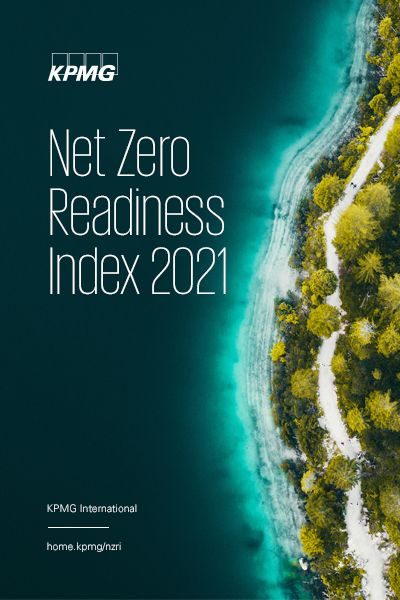Industry is the sector on which the NZRI's 32 countries have the highest degree of variability, across decarbonization progress, government action and delivery capability. Direct industrial emissions have plateaued since 2021, with a modest reduction among non-energy intensive industries. The International Energy Agency says that energy efficiency, uptake of clean energy and fuels, low-carbon process routes including carbon capture and storage (CCS), and ambitious work on material efficiency are critical to industrial decarbonization.1
Top five countries in industrial decarbonization readiness

Government action
Wafa Jafri, Director, Energy Lead Advisory, KPMG in the UK, says that some countries could improve their performance by removing regulatory barriers that stop less energy-intensive industrial users buying their own renewable energy. “The decarbonization market is evolving and a lot of energy companies want to be part of that solution, but the mechanisms need to be right to drive that forward,” she says.
On CCS, the NZRI flags low implementation of policy and even lower planned capacity to date outside of Norway which is the clear leader followed by the UK and the US. Jafri says that energy-intensive industries need more involvement from governments, including financial support to help them decarbonize their processes and set up CCS projects, as well as the imposition of steep carbon taxes. “Without proper investment in low carbon technology we cannot close the gap to achieving Net Zero,” she says. “The impact of higher carbon taxes and similar measures such as the carbon border adjustment mechanism should be considered as part of any investment decision,” adds Mike Hayes.
Circularity and efficiency
One area of improvement is productivity relative to industrial energy consumption. An increased uptake of industrial energy efficiency policies can drive progress in productivity of energy consumption. Another area is productivity relative to material input, with 29 of the 32 countries having adopted a circular economy or resource recovery policy in the form of a law, strategy or action plan.
Supply chains
Jafri adds that reported industrial emissions are only now including greenhouse gas emissions associated with the activities of a business, but not directly generated by that business or the energy it uses, known as scope 3 emissions. In the case of equipment such as jet engines, operational emissions far outweigh those required to build them, meaning industry has an even greater impact than its numbers suggest. There is an urgent need to address scope 3 emissions, although an increasing number of companies are taking accountability for them in emissions reduction targets, in response to customer and investor pressure.
Financing innovation
The Index flags there is still low delivery capability in the sector with underdeveloped clean tech markets, low numbers of industrial decarbonization technology patents and only nine countries with low carbon industrial clusters in development.
Jafri says that lots of people are motivated to develop cleaner industrial technologies but there is a shortage of early-stage funding for such research as it does not fit conventional venture capital models: “People don't know how to fund it. All you have are government grants.” One answer could be for investment firms to set up specific innovation funds for green industrial technologies.
Thakker says this would be especially critical if investment is needed in technologies such as green hydrogen, CCS and carbon usage which are critical for bridging gaps in decarbonization, especially in the so-called `harder to abate' sectors such as metals, chemicals and cement. “While these industries are actively exploring their strategies and launching pilots, full-scale commercialization of such technologies may be some way off and would require more investment in innovation,” she adds.
The difficulty that companies face is in measuring actual industrial emissions throughout their supply chains. Significant investment and cost increases are required to actualize Net Zero, but companies cannot make critical investment decisions without a correct understanding of their business environments. Such an understanding of actual industrial emissions will be a key driver in facilitating investment in green technology and Net Zero energy solutions.
Get in touch
Argentina | Australia | Brazil | Canada | Chile | China | Denmark | France | Germany | Hungary | India | Indonesia | Italy | Japan | Malaysia |
Mexico | New Zealand | Nigeria | Norway | Poland | Russia | Saudi Arabia | Singapore | South Africa | South Korea | Spain | Sweden | Thailand |
Turkey | United Arab Emirates | United Kingdom | United States
1 'Tracking industry 2020', International Energy Agency, June 2020. https://www.iea.org/reports/tracking-industry-2020



